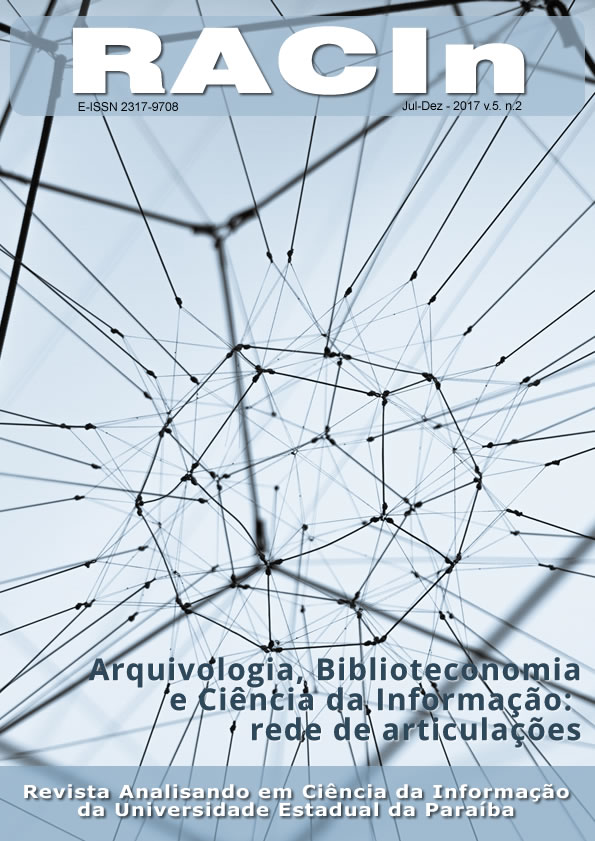FOR WHOM AND WHAT DO WE INFORM? THE NEW STATE, NATAL AND DAILY INFORMATION IN THE NEWSPAPER "A REPÚBLICA" (1941-1942)
Keywords:
Daily information. The Republic - Natal Newspaper, Second World WarAbstract
It aims to identify the daily information in the city of Natal through the analysis of the information circulated in the newspaper The Republic between 1941 and 1942. For this, the information collected from the newspaper was categorized, thus constructing a conceptual map through the selected typology. The hypothesis is that there is an increase in new types of information in the newspaper, even assuming that it underwent a process of silencing due to government censorship. As a methodology, we used bibliographical research and documentary research, made in the newspaper The Republic, which is in the Public archive of the State of Rio Grande do Norte. Then, a corpus of these newspapers was created, as a way of creating a sampling of periodical documents. In this way the methodology of the artificial week was used, which as a method, allows the creation of dates for periodic corpus analysis. Finally, with the content analysis, the results obtained were traced through conceptual maps, showing the modifications in the way of informing to the detriment of the New State structure. With the representation of information through the conceptual maps, it is clear the interconnection of the general information to the more specific, created and divided by the newspaper. It can be considered that the way of informing, has all its molds given by the government, its changes and changes are reflections of the silencing and censorship to which the newspaper is submitted. In addition to having a delimitation of its public and of who is considered part of a natal society of the time, the daily information, thought from one of the main sources of information of the city, has its structure molded and imposed by the Estado Novo, that uses of the silencing in all means of communication.
References
A REPÚBLICA. Natal: Departamento Estadual de Imprensa (DEIP), ago. 1942.
A REPÚBLICA. Natal: Departamento Estadual de Imprensa (DEIP), jul. 1941.
AVELINO, Carmem Daniella Spínola da Hora. O silenciamento no texto jornalístico e a construção social da realidade. 2006. 136 f. Dissertação (Mestrado) - Curso de Mestrado em Linguística Aplicada, Centro de Ciências Humanas, Letras e Artes, Universidade Federal do Rio Grande do Norte, Natal, 2006. Disponível em: <http://repositorio.ufrn.br/handle/123456789/16141>. Acesso em: 20 out. 2015.
BARRETO, Angela Maria. Memória e sociedade contemporânea: apontando tendências. Revista ACB: Biblioteconomia em Santa Catarina. Florianópolis, v. 12, n. 2, p. 161-167, dez. 2007. Semestral. Disponível em: <https://revista.acbsc.org.br/racb/article/view/506/651>. Acesso em: 10 jun. 2016.
BAUER, Martin W. Análise de conteúdo clássica: uma revisão. In: BAUER, Martin W.; GASKELL, George (Ed.). Pesquisa qualitativa com texto: imagem e som, um manual prático. Rio de Janeiro: Vozes, 2002. Cap. 8. p. 189-217.
CAPELATO, Maria Helena. Propaganda política e controle dos meios de comunicação. In: PANDOLFI, Dulce (Org.). Repensando o Estado Novo. Rio de Janeiro: Fundação Getúlio Vargas, 1999. Cap. 9. p. 167-197.
GOMES, Ângela de Castro. A invenção do trabalhismo. 3. ed. Rio de Janeiro: FGV, 2005. p. 176-209.
GONÇALVES, E. F.; FREIRE, B. M. J. Construção da informação cotidiana: um olhar sobre o foco do fazer jornalístico. Biblionline, v. 1, n. 1, p. 1-27, 2005. Disponível em: <http://www.brapci.ufpr.br/brapci/v/9284>. Acesso em: 10 jun. 2016.
GONDAR, Jô. Cinco proposições sobre memória social. Revista Morpheus, Rio de Janeiro, v. 15, n. 9, p. 19-40, jan. 2016. Semestral. Disponível em: <http://www.memoriasocial.pro.br/painel/pdf/publ_19.pdf>. Acesso em: 10 set. 2017.
HALBWACHS, Maurice. A memória coletiva. São Paulo: Editora Revista dos Tribunais, 1990.
HELLER, Agnes. Cotidiano e história. São Paulo: Paz e Terra, 1992.
LEFEBVRE, Henri. Vida cotidiana no mundo moderno. São Paulo: Ática, 1991.
OLIVEIRA, Lúcia Lippi. Tradição e política: o pensamento de Almir de Andrade. In: OLIVEIRA, Lúcia Lippi; VELLOSO, Mônica Pimenta; GOMES, Ângela Maria Castro. Estado Novo: ideologia e poder. Rio de Janeiro: Zahar, 1982.
SMITH JUNIOR, Clyde. Trampolim para a vitória. Natal: UFRN Editora Universitária, 1992.
VELLOSO, Mônica Pimenta. Cultura e poder político: Uma configuração do campo intelectual. In: OLIVEIRA, Lúcia Lippi; VELLOSO, Mônica Pimenta; GOMES, Ângela Maria Castro. Estado Novo: ideologia e poder. Rio de Janeiro: Zahar, 1982.
XIFRA-HERAS, Jorge. A informação: análise de uma liberdade frustrada. Rio de Janeiro: Lux; São Paulo: Universidade de São Paulo, 1975.
Downloads
Published
How to Cite
Issue
Section
License
Copyright (c) 2024 Revista Analisando em Ciência da Informação

This work is licensed under a Creative Commons Attribution-NonCommercial-NoDerivatives 4.0 International License.
As publicações da RACIn estão licenciados sob a Licença Creative Commons CC BY-NC.





